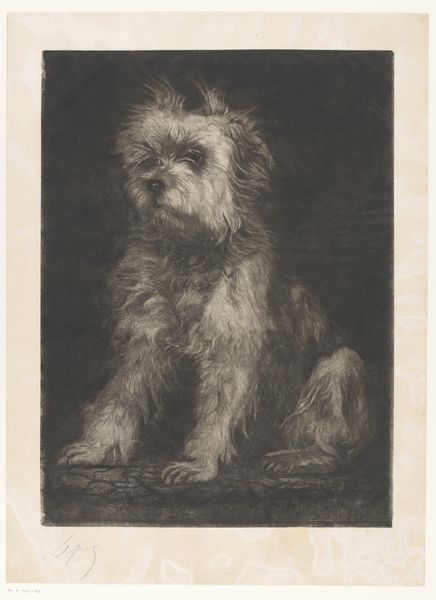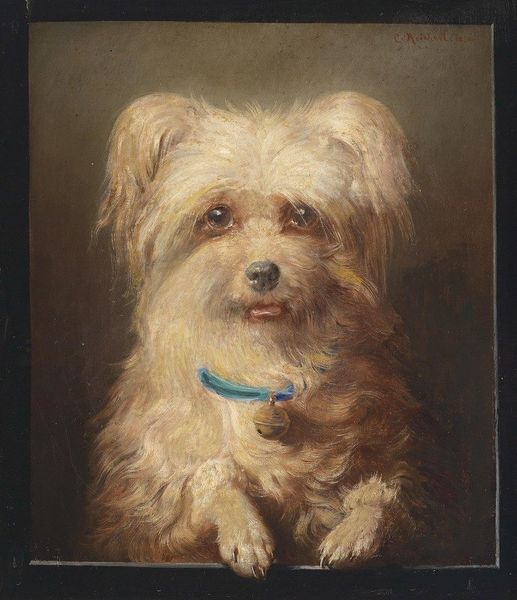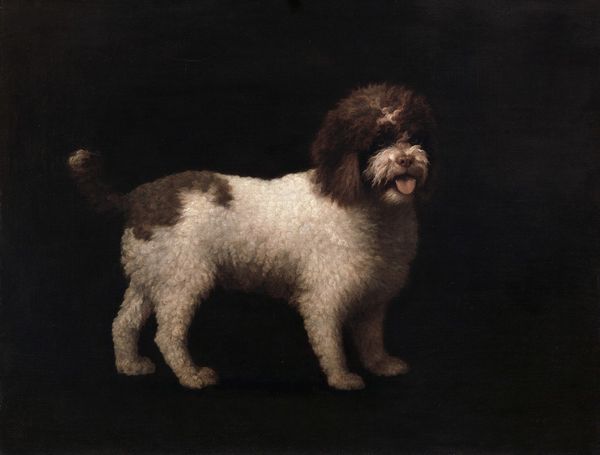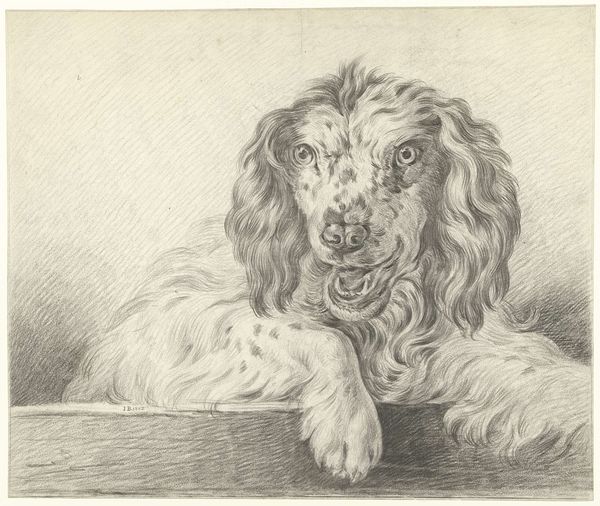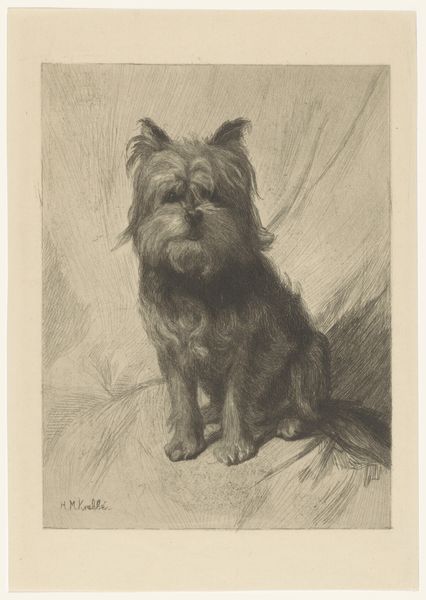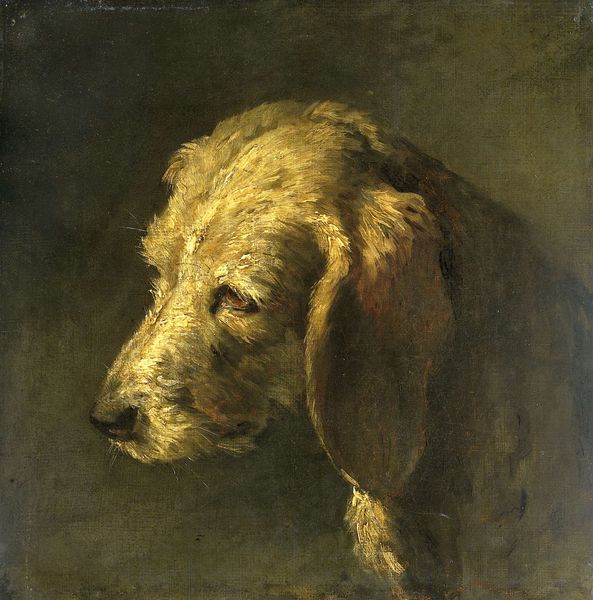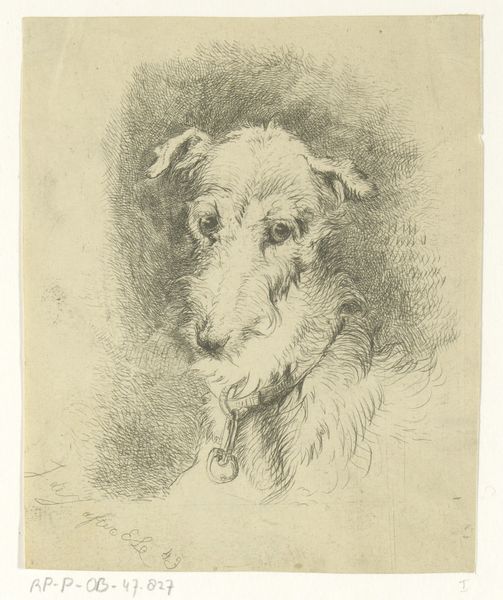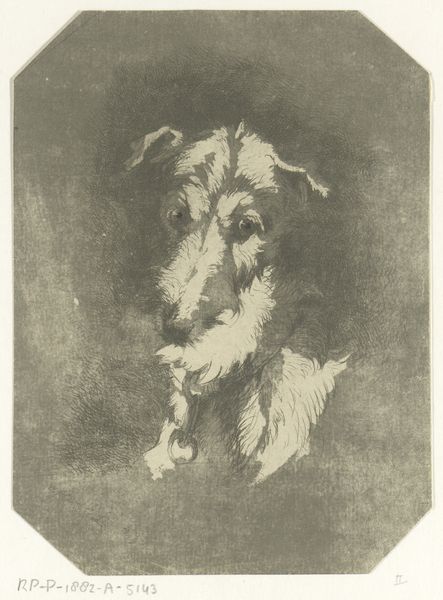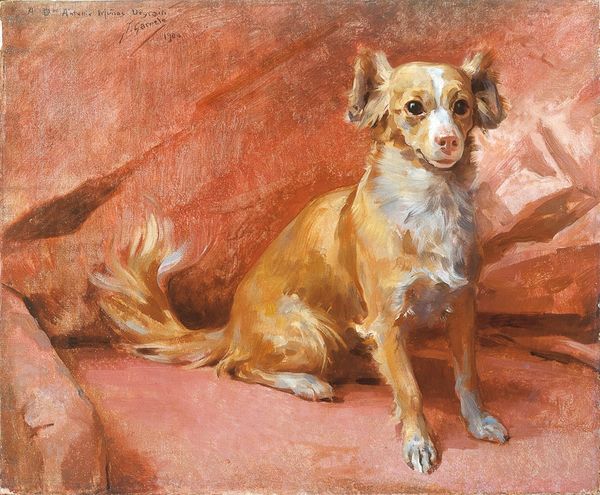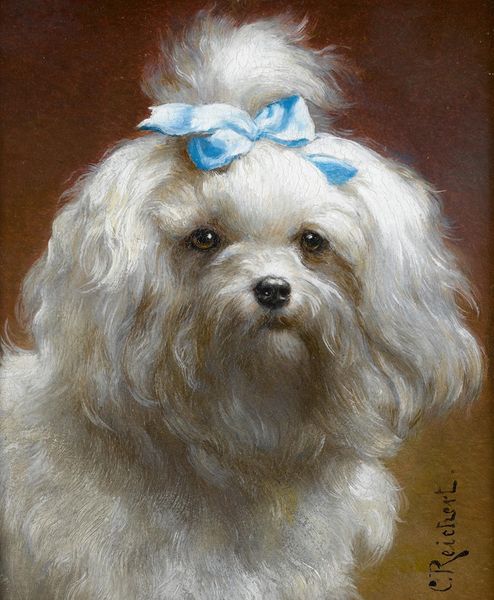
painting, oil-paint, oil
#
portrait
#
animal
#
painting
#
oil-paint
#
dog
#
oil
#
animal portrait
#
realism
Dimensions: 44.4 x 60.8 cm
Copyright: Public Domain
Victor Müller painted this dog, Pinscher Puss, in oil on canvas, sometime in the mid-19th century. The visible brushstrokes and the texture of the paint are as much the subject of the piece, as is the dog itself. The painting appears effortless, as though it were created in a single sitting. But we know this belies the labor of grinding pigments, preparing the canvas, and then, of course, the meticulous work of rendering the dog’s shaggy coat, capturing its likeness. This was the system of production that underpinned the 19th-century art world: skilled artists, trained to capture realistic likenesses, working for wealthy patrons. It’s easy to overlook the labor involved in creating a work like this, to focus instead on the image itself. But by considering the materials and processes involved, we gain a deeper appreciation for the artist's skill, and the social context in which the work was made. Müller elevates the status of the painting by using techniques of high art to portray an ordinary dog, reminding us of the subtle skill and craft that goes into making a painting.
Comments
stadelmuseum about 2 years ago
⋮
Boisterous and droll: Puss, the Scholderer family's pinscher. As a regular guest of his fellow artist, Victor Müller knows his model well. He even mentions the shaggy lapdog, which was regarded as a status symbol at the time, in his correspondence. The artist accurately captures the dog's urge to scamper around, which Puss radiates despite his motionless pose. Müller had made a name for himself above all as the painter of mythological scenes. Here, he succeeds with an unusual picture here - the portrait of a dog.
Join the conversation
Join millions of artists and users on Artera today and experience the ultimate creative platform.
